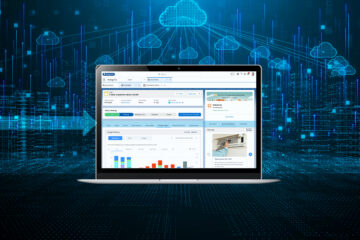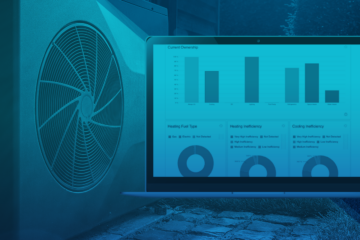Realizing Better Planning, Targeting & Recruitment, Optimization and Measurement
Download our free AI-enhanced DSM Programs infographic and watch our on-demand webinar: Why Everyone, Including DSM Implementers, Benefits from Meter Data Analytics.
Demand side management (DSM) success requires designing programs that will make the biggest impact, targeting the customers best-suited for those programs, and using the ideal communications tools and channels to engage those customers and maximize program adoption.
Applying meter-derived intelligence to DSM implementation dramatically improves the ability of utilities and DSM implementers to plan, target and recruit, optimize, and measure. AI-enhanced DSM programs leverage energy disaggregation to reveal appliance-level insights that improve DSM program performance at every stage, and use incentive dollars more strategically and effectively.
Program Planning
Understanding appliance ownership and the energy use profiles of each customer across a service territory should be an essential input in DSM program planning. UtilityAI™ Analytics Workbench reveals this important customer data at very granular levels within tightly defined geographies to enable DSM programs that are more cost effective and reliable.
For example, Analytics Workbench can identify whether more homes in a given target area have window or room A/C units vs central A/C units — an insight that can inform better program design. If room A/C units are common, a program to encourage the purchase of efficient window units through a marketplace might be appropriate. Alternatively, in regions where central A/C is the norm, programs might suggest professional A/C tune ups or promote the purchase of smart thermostats.
See an Analytics Workbench demo.
Targeting & Recruitment
Targeting and assessing customers based on their load shape represents a huge advance over traditional DSM program targeting. Every customer should be engaged differently based on their appliances and energy habits. Having the ability to micro-target those customers who can save the most energy leads to programs that easily hit their savings goals while staying within budget.
For example, given that electric vehicle programs are a leading DSM priority for many utilities, meter-derived intelligence available through Analytics Workbench enables program implementers to detect which homes have electric vehicle chargers. That intelligence allows implementers to target those customers exclusively — better allocating marketing spend and avoiding the negative customer engagement spam repercussions from sending EV program messaging to customers who do not have an EV charger.
Drilling down further, Analytics Workbench can detect whether EV-owning customers have level two chargers or level three chargers installed. Because level three chargers put a greater load on the grid, many utilities are starting to use DSM programs to help relieve level-three-charger-related load constraints. Because they can be hyper-personalized, meter-data-informed DSM programs can be targeted to only those customers with level three chargers for maximum impact.
Similarly, DSM A/C load shifting programs are far more effective when they are AI-enhanced. Analytics Workbench analyzes A/C usage to make it easy for implementers to isolate homes with the greatest load shifting potential — i.e. those with the highest usage and/or those who use a lot of energy during peak times. Given each home’s unique energy-usage patterns, it’s also easy to align the ideal program with each household. One home using a lot of energy during peak times may be best suited for an A/C retrofit program while another home might benefit most from pre-cooling or changing their set points. Bidgely’s analytics allow implementers to understand and leverage very specific nuances within meter data and customer behavior patterns.
Utilities realize higher engagement rates and DSM adoption rates and streamlined marketing and rebate spend when programs are narrowly targeted and messaging is customized to each individual customer.
Hear from NV Energy’s Adam Grant about their meter-data-driven DSM program success.
Because program implementers have their own marketing tools in place, Bidgely’s analytics are made available through widgets that can be integrated with drag-and-drop simplicity within Hubspot, Salesforce Marketing Cloud and other CRM and campaign platform templates.
Optimization & Support
During the program delivery process, implementers have a number of tools at their disposal to help monitor progress along the way. But Analytics Workbench does more than any other to enhance program execution and improve control with its dynamic and up-to-date DSM program analysis.
Implementers can use Analytics Workbench to run an informed baseline report at the beginning of a program to establish consumption within the region, and then run the same report at strategic intervals to assess how a particular DSM program is doing in reducing energy consumption. If the results don’t align with expectations, Analytics Workbench helps implementers pinpoint the cause and course correct mid-program without requiring additional budget.
For example, variable speed pool pump replacement programs require a significant utility investment and can yield huge energy savings, but only if the pumps are properly calibrated.
Analytics Workbench reveals whether equipment is installed correctly. Based on the data signature, program managers can see whether a pool pump has been programmed as though it is a single speed, limiting energy savings, and flag the home for quality control.
Performance Measurement
By analyzing meter consumption data, utilities and implementers are able to keep tabs on how a program is doing in near real time. This approach bypasses lengthy M&V cycles and reveals clearer insights as to how programs are performing to inform monitoring, future planning and forecasting. Utilities are able to refine and de-risk on an ongoing basis with appliance-specific feedback and frequent reporting on program performance.
This advantage can serve as an important differentiator for those implementers that are thinking creatively about program design, and want to realize a competitive advantage by offering a performance-based model.
Utility investment in AMI infrastructure can yield significant improvements in DSM program implementation and success, ensuring every marketing and incentive dollar is well spent. For many utilities, leveraging meter data to optimize DSM performance is an untapped resource that is readily available to deliver meaningful ROI. Learn more about how Bidgely can help by test driving Analytics Workbench for yourself and watching the on-demand webinar: Why Everyone, Including DSM Implementers, Benefits from Meter Data Analytics.


